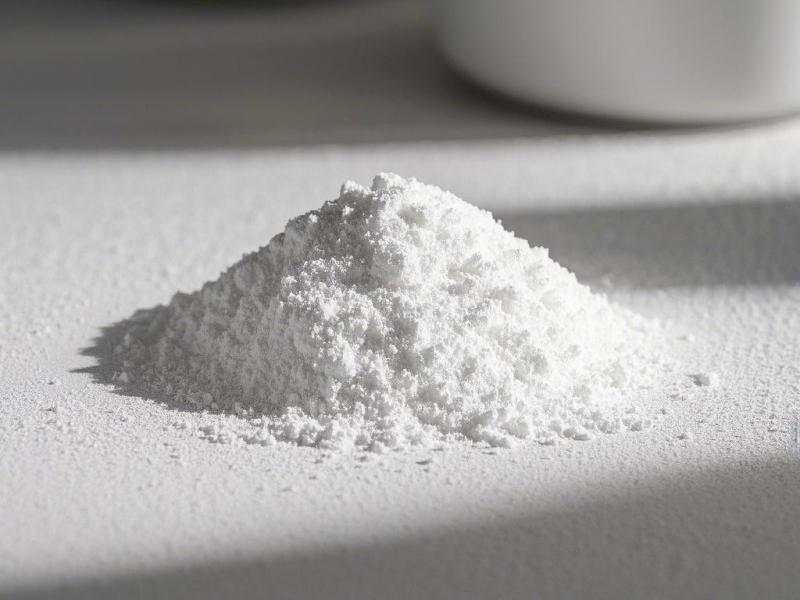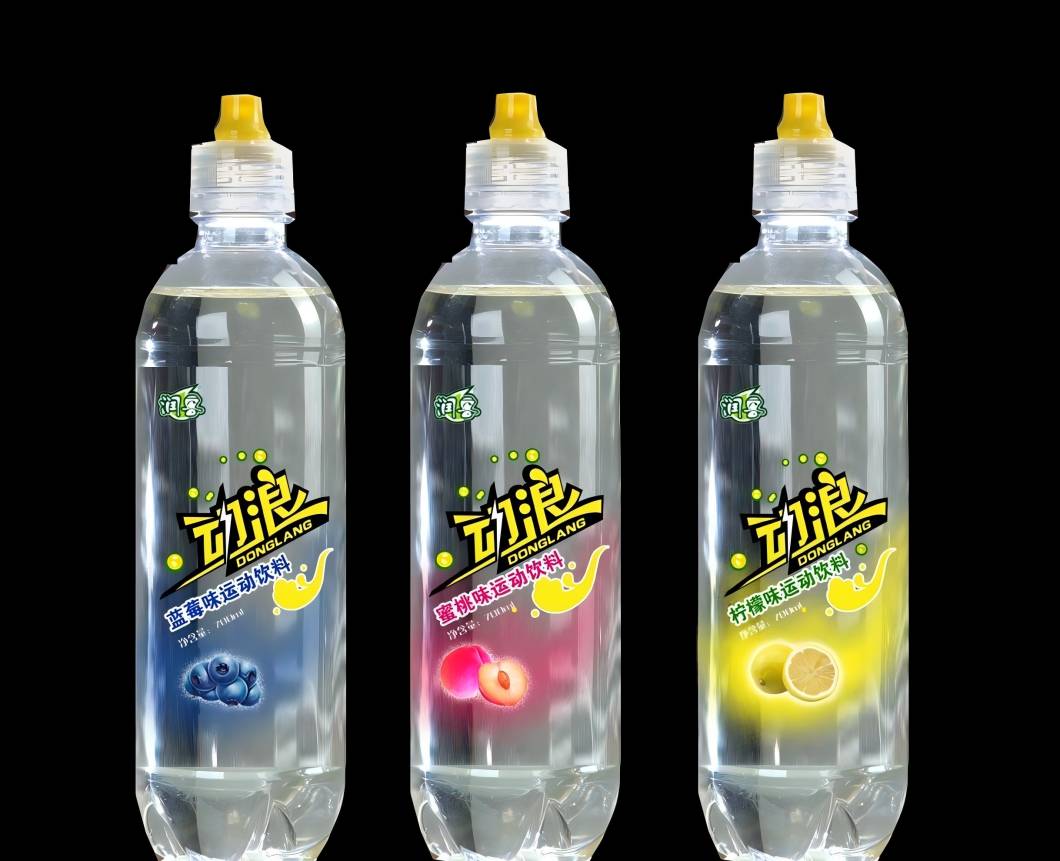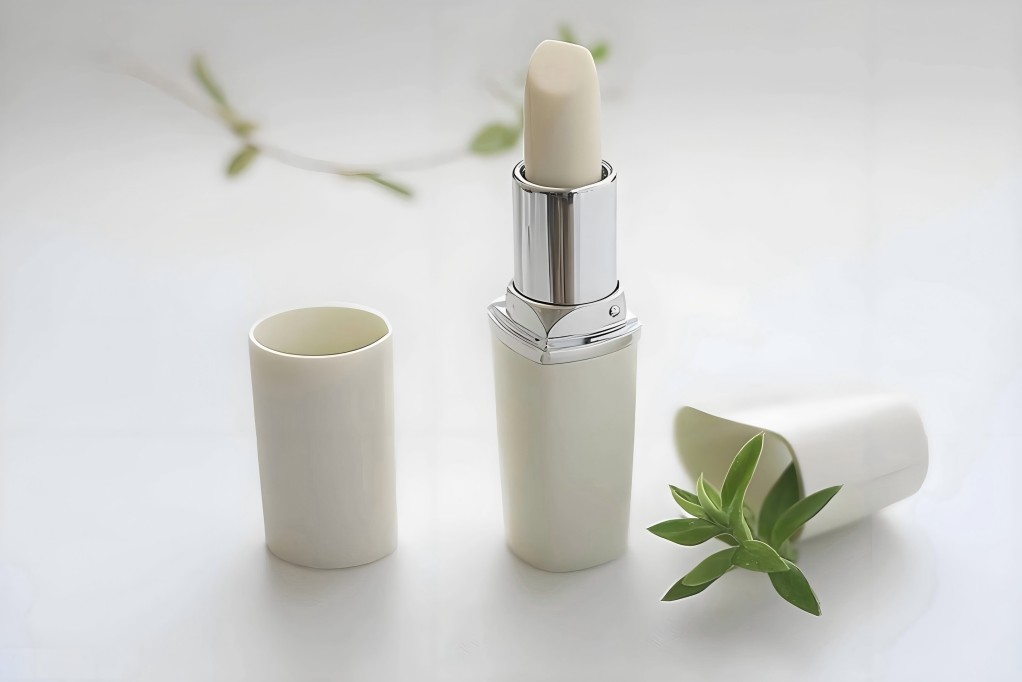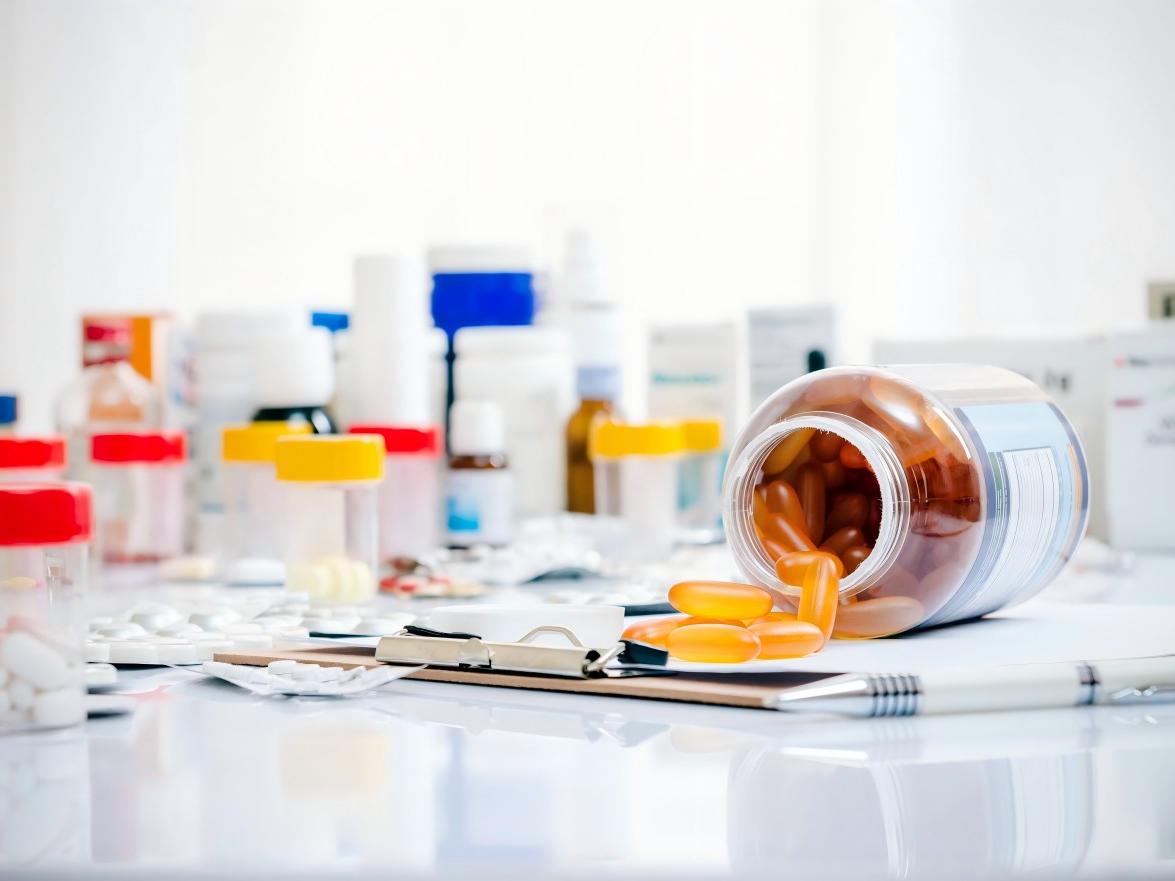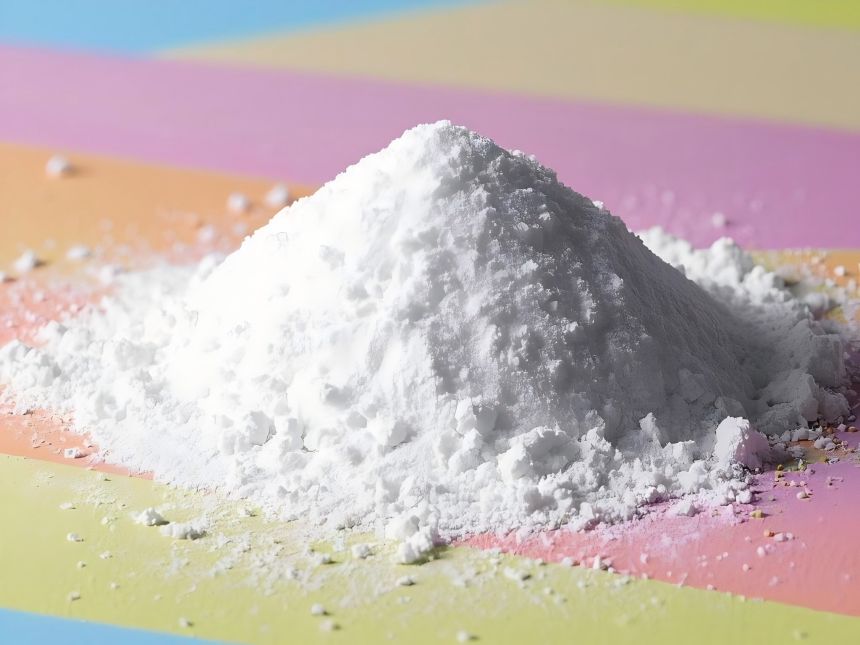Study on Octacosanol Improves Sports Performance
Octacosanol (CH3[CH2]26CH2OH) is a naturally occurring long-chain fatty alcohol that is the main nutrient in the waxy components of plants [1-2]. Recent research has shown that octacosanol is also found in animal food [3]. As a natural nutrient, octacosanol is completely absorbed into the blood and various tissue cells in humans and animals [4] and metabolised by the body through pathways such as fatty acid oxidation [5]. Since the 1990s, the physiological regulatory functions of octacosanol have been increasingly understood and studied. The earliest research found that octacosanol can lower blood lipids [6]. Octacosanol can significantly lower blood cholesterol and low-density lipoprotein (LDL), while increasing high-density lipoprotein (HDL) levels [7].
In addition, current research has found that the consumption of octacosanol can regulate multiple physiological processes in humans and animals, such as coagulation function, energy metabolism, inflammatory response, motor function, antioxidant capacity, and nervous system function, and also has beneficial effects in animal husbandry. Octacosanol has the advantages of low toxicity and low cost, but its specific regulatory effects and mechanisms still need to be further studied. For example, if the regulatory effect of octacosanol on lipid metabolism is not significant, it needs to be further confirmed. This paper reviews the absorption and metabolism of octacosanol and the mechanism of its physiological regulatory effects, with a view to providing new ideas and directions for the research and application of octacosanol.
1 Sources of octacosanol
Octacosanol is the main component of a major natural alcohol mixture isolated from wheat germ oil extract (policosanol), sugar cane extract, rice bran wax and beeswax, and was first extracted from wheat in 1933 [1]. Octacosanol is usually found in the fruits, leaves and seeds of plants, as well as in the waxy components on the surface of plants [8-11]. Studies have shown that the content of octacosanol varies greatly in different plants. For example, the content of octacosanol in perilla oil can reach 400 mg/kg, while only trace amounts are detected in corn oil and soybean oil [2]. Different growth conditions (such as light and growth period) can also affect the content of octacosanol in the same plant [12-13]. High levels of tetracosanol have also been found in animals, for example, Antarctic krill contains about 10.6 µg/mg tetracosanol [3]. In addition, animal foods such as honey, the Chinese medicinal insect Chinese ground beetle, and the lipid-lowering bee waxin also contain tetracosanol [14-16].
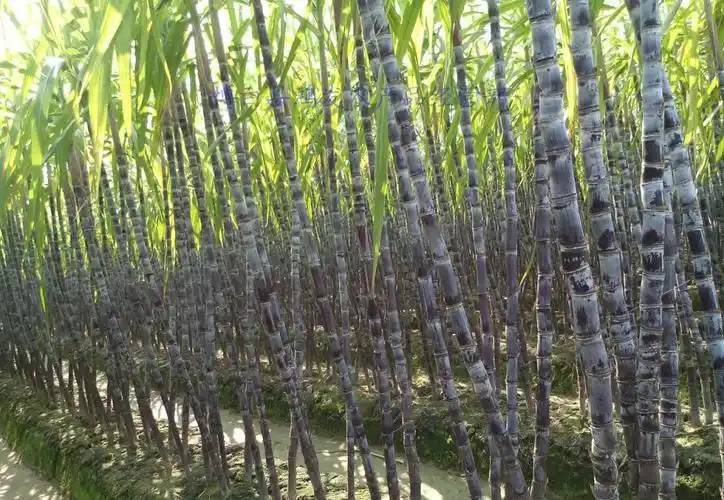
Studies have shown that octacosanol is found in a variety of animals and plants, but the amount of octacosanol that can be ingested in a normal diet is very small. Therefore, octacosanol is usually supplemented in animal and human studies to investigate its physiological regulatory effects.
2 Absorption and metabolism of octacosanol
Food-grade octacosanol can be absorbed by humans and animals. Research results show that after 50 mg of octacosanol is administered to humans, the intact octacosanol molecule can be detected in the blood, indicating that octacosanol can be completely absorbed into the circulatory system [4]. When rats were given 14C-labeled octacosanol orally, radioactive substances were not only detected in the blood, but also in the liver, fat, muscles, spleen, kidneys, heart and other tissues in considerable amounts. The highest blood concentration was reached within 1 hour, and the radioactive content in the tissues could persist for up to 3 days after a single oral administration of 14C-labeled octacosanol. Octacosanol can be absorbed by different tissues, but the amount absorbed varies greatly, with fat tissue (especially brown fat tissue), liver and muscle absorbing more [17-18].
The overall absorption efficiency of octacosanol is not high. Octacosanol is insoluble in water and only slightly soluble in cooking oil at room temperature. This weak solubility reduces the absorption efficiency of octacosanol [19-20]. In a study in which rats were gavaged with 60 mg/kg octacosanol, the results showed that the maximum blood concentration was 30.4 ng/mL, and 68.4 ng/g in the liver. Oral administration of 10 mg/kg to Macaca arctoides monkeys resulted in a maximum blood concentration of 78.2 ng/mL [21]. 14C-labeled 2-ethylhexanol was administered orally to rats, and the results showed that a large amount of the ingested 2-ethylhexanol was excreted in the feces, accounting for about 32% of the administered dose. In addition, radioactivity was detected in the metabolically produced CO2 and in the urine, and the radioactivity in the urine was concentrated in the aqueous phase extract rather than the lipid extract [18], suggesting that the absorbed octacosanol can be absorbed and metabolized by tissue cells.
In summary, octacosanol can be completely absorbed into the blood [4] and can be absorbed into various tissue cells and converted to octacosanoic acid [21], which can then enter the fatty acid β-oxidation metabolic pathway for further metabolism [18, 21]. Studies have shown that after oral administration of octacosanol to rhesus monkeys, the blood levels of medium- and long-chain saturated fatty acids such as stearic acid (C18), palmitic acid (C16) and myristic acid (C14) increased significantly and continuously, and the content of unsaturated fatty acids such as oleic acid (C18) also increased [21]. This suggests that octacosanol can be metabolized by β-oxidation into shorter chain fatty acids and ultimately into CO2 to provide energy for the body. This may be an important mechanism by which octacosanol exerts its physiological regulatory effects.
3 Physiological regulatory effects of octacosanol
3.1 Lowering blood lipids
The first biological function of octacosanol to be discovered was to lower blood lipids. In 1994 [22] and 1995 [6], it was found that supplementing animal food with octacosanol could lower blood lipids such as cholesterol, LDL and triglycerides. Subsequently, a number of human clinical trials also showed that octacosanol can lower blood cholesterol and LDL while raising HDL [7]. Compared to statin drugs, octacosanol has fewer side effects and is safer. It also has a lipid-lowering effect in people who are not already suffering from high blood lipids, so food supplementation with octacosanol can be used as a preventive measure. However, these clinical trials had small sample sizes and short durations, and larger, longer-term clinical trials are needed to truly confirm the lipid-lowering effect of octacosanol.
Early rat experiments showed that octacosanol may inhibit the activity of enzymes involved in triglyceride synthesis [6]. Octacosanol was shown to inhibit cholesterol synthesis by inhibiting the expression of the cholesterol synthesis rate-limiting enzyme 3-hydroxy-3-methylglutaryl coenzyme A (3-Hydroxy-3-Methylglutary Coenzyme A, HMG-CoA) reductase, thereby reducing cholesterol levels [23]. In vitro cell test results show that octacosanol does not directly inhibit the activity of HMG-CoA reductase, but rather exerts a regulatory effect on HMG-CoA reductase by activating AMPK [24-25]. In addition, octacosanol can inhibit the oxidation of LDL, regulate the absorption and clearance of LDL, and thus regulate the level of LDL in the blood [26].
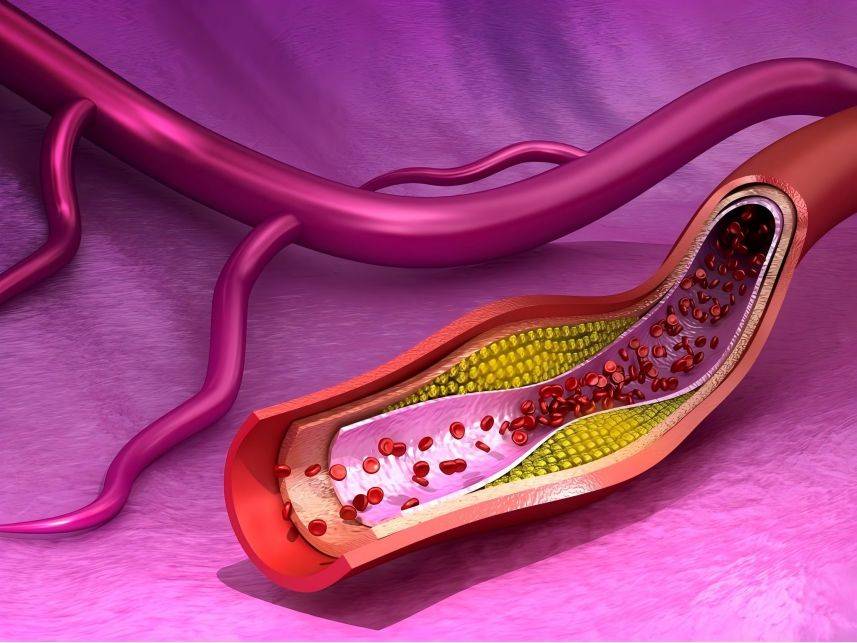
However, some test results show that octacosanol does not have an antioxidant effect [27], but rather reduces cholesterol levels by inhibiting bile acid absorption. Some studies have shown that octacosanol does not significantly reduce blood lipids [28-30], does not affect blood cholesterol and LDL levels, but can reduce the excretion of cholesterol metabolites and reduce systemic cholesterol stores [4]. At present, the role of octacosanol in regulating lipid metabolism is still controversial. In addition to increasing the sample size and duration of future studies, attention should also be paid to monitoring the absorption of octacosanol and the dosage of octacosanol.
3.2 Anticoagulant
High doses of docosanol (50–200 mg/kg) can inhibit platelet aggregation in rats, and have an anticoagulant effect [31]. Docosanol may produce an anticoagulant effect by inhibiting the formation of thromboxane A2 (TxA2), a coagulation factor released by platelets [32–33]. Patients with hyperlipidemia are generally prone to cardiovascular and cerebrovascular thrombosis. Developing drugs that can lower lipids and regulate coagulation at the same time has always been the goal of treating hyperlipidemia and other metabolic diseases. However, there has been little research on the anticoagulant effects of octacosanol, and its effects and mechanisms require further research and confirmation.
3.3 Regulating energy metabolism
Some studies have shown that octacosanol can inhibit obesity induced by high-fat foods in mice. Under high-fat feeding, supplementation with octacosanol can increase the expression of Free Fatty Acid Receptor 4 (Ffar4) in the brown fat of mice, promote uncoupling protein 1 (Ucp1)-mediated non-shivering thermogenesis in adipose tissue, increase energy consumption in the body, and thus reduce body fat [5]. At present, it is known that octacosanol can enter the β-oxidation metabolic pathway to provide energy for the body, thereby increasing energy intake. However, no further results have shown that octacosanol has a significant inhibitory effect on obesity. The role of octacosanol in regulating energy metabolism still needs to be further studied.
3.4 Anti-inflammatory effect
The regulatory role of octacosanol in inflammatory responses is also an area of much research. Cardamom leaves contain active ingredients such as octacosanol and other aliphatic compounds, and are a traditional Indian anti-inflammatory herb [34]. Long-chain fatty alcohols, including octacosanol, extracted from olive oil residue [35] and Polygonum multiflorum leaves [36] can inhibit the expression of inducible Nitric Oxide Synthetase (iNOS), an inflammatory factor in macrophages stimulated by Lipopolysaccharide ( LPS) stimulated macrophages RAW264.7 expression of inducible Nitric Oxide Synthetase (iNOS), which in turn reduces the production of nitric oxide, suggesting that natural fatty alcohols may have anti-inflammatory effects.
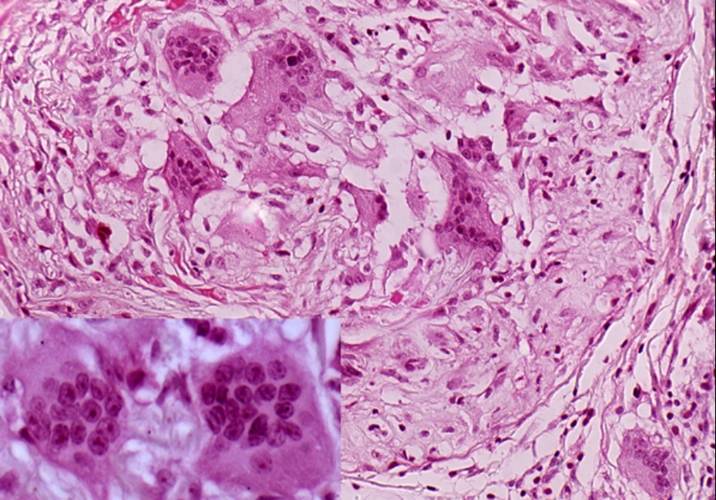
Octacosanol extracted from the leaves of Rubiaceae plants can significantly reduce the number of white blood cells, neutrophils and the content of Tumor Necrosis Factor-α (TNF-α) in the pleural cavity of mice with pleurisy induced by carrageenan, further demonstrating the anti-inflammatory effect of octacosanol [37]. Octacosanol can also effectively relieve the colitis induced by dextran sulfate sodium (DSS) in mice, significantly inhibiting the increase in the concentration of inflammatory factors such as TNF-α, interleukin-1β (IL-1β), interleukin-6 (IL-6) and iNOS induced by DSS in colonic tissue [38]. The test results further show that octacosanol can directly regulate the expression of TNF-α, IL-1β, IL-6 and iNOS in macrophages RAW 264.7 by regulating the MAPK/NF-κB/AP-1 signaling pathway, thereby producing an anti-inflammatory effect.
3.5 Enhances motor function
Tetracosanol can improve motor function. As early as the 1960s, animal experiments showed that oral administration of tetracosanol can have anti-fatigue and enhance exercise capacity effects [39-40]. Supplementation with tetracosanol can significantly increase the time that rats can run continuously [40]. Studies on the effect of octacosanol on the motor function of the body in weightlessness found that supplementing with octacosanol can improve the femoral characteristics of rats in inverted suspension and increase thymus mass, suggesting that octacosanol can be used as a nutritional supplement for astronauts to improve the damage to the body's motor function caused by weightlessness [41]. Studies have found that supplementing with a mixture of octacosanol, branched-chain amino acids, restricted amino acids, carnitine and vitamins can accelerate the recovery of the heart rate of drug-detecting dogs (German shepherds) after exercise and reduce muscle damage caused by exercise [42].
Octacosanol can significantly increase exercise time. When supplemented after exercise in a state of physical exhaustion, the blood glucose and intramuscular glycogen content of rats in the octacosanol group was not significantly different from that of the control group [43], suggesting that octacosanol supplementation may improve exercise performance by conserving muscle glycogen use. At the same time, the blood creatine phosphokinase and muscle citrate synthase activities were higher than those of the control group, suggesting that octacosanol improves the oxidative phosphorylation capacity of muscles. The results of an isotope tracing experiment showed that the accumulation of octacosanol in the muscle tissue of exercised rats was higher than that of non-exercised rats [44]. The main source of energy for muscle movement is the supply of fatty acid β-oxidation [45]. Octacosanol can enter the fatty acid β-oxidation metabolic pathway to produce energy [21], suggesting that octacosanol may enhance exercise capacity by increasing muscle energy supply. In addition, short-term experimental results in athletes show that supplementing with octacosanol can increase the activity of superoxide dismutase (SOD) and glutathione peroxidase (GPx) in the blood after high-intensity exercise, while reducing malondialdehyde (MDA) levels, suggesting that octacosanol relieves the oxidative stress caused by high-intensity exercise [46].

3.6 Antioxidant
The antioxidant effect of octacosanol has been found in liver tissue in addition to muscle tissue. In a rat model of acute carbon tetrachloride-induced liver injury, octacosanol supplementation can alleviate the increase in blood transaminase activity and the increase in myeloperoxidase, xanthine oxidase activity, lipid peroxidation (LPO) levels, as well as the reduced activity of SOD and catabolic enzymes and the decreased glutathione content in the liver [47]. Octacosanol can even reduce liver LPO levels and increase glutathione content in normal rats that have not been treated with carbon tetrachloride [47]. In addition, in a mouse model, octacosanol can relieve the stress caused by oxidative stress, thereby improving the harmful effects of stress on sleep [48].
3.7 The effect of octacosanol on the nervous system and neurodegenerative diseases
Studies have shown that oral administration of octacosanol for 7 days can shorten the reaction time of the human brain [49], suggesting that octacosanol may have a beneficial effect on neurological function. In a mouse model of Parkinson's disease induced by 6-hydroxydopamine (6-OHDA), behavioral damage was improved after the mice were supplemented with octacosanol for 14 days. Octacosanol treatment can inhibit the reduction of tyrosine hydroxylase-positive (TH-positive) neurons in the substantia nigra and striatum, and reduce apoptosis in the striatum [50]. Octacosanol can produce these effects by regulating the pro-nerve growth factor (pro-NGF) and nerve growth factor (NGF) pathways. Octacosanol also has a mitigating effect on the 1-methyl-4-phenyl-1,2,3,6-tetrahydropyridine (1-Methyl-4-Phenyl-1,2,3,6 Tetrahydropyridine, MPTP) induced mouse Parkinson's model also has a relieving effect, and it is achieved by regulating the p38 Mitogen-Activated Protein Kinase (p38 MAPK) and c-Jun N-terminal Kinase (JNK) signal pathways [51].
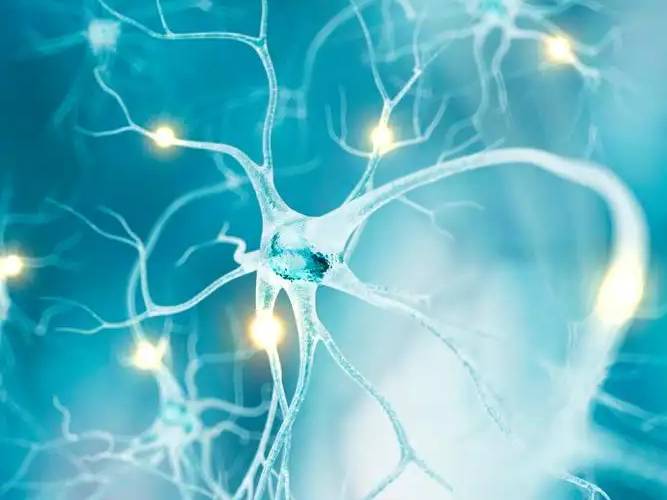
4 Octacosanol in animal production
In livestock production, supplementing with octacosanol can improve the production performance of broilers. Adding 24 mg/kg octacosanol to the feed can significantly increase the daily growth rate of broilers, and production indicators such as chicken breast meat yield are also significantly improved, suggesting that octacosanol can be used as a safe additive to improve the production efficiency of livestock animals [52]. Octacosanol can also increase the egg production and egg quality of chickens [53]. Octacosanol can increase the serum levels of follicle-stimulating hormone (FSH) and estradiol in laying hens, as well as the mRNA expression of follicle-stimulating hormone receptors (FSHR), luteinizing hormone receptors (LH) and prolactin receptors (PRL) in follicles. and there was also a significant increase in the weight of ovarian tissue, suggesting that octacosanol can improve the reproductive performance of chickens and thus affect production performance such as egg production [54]. Studies on piglets have shown that octacosanol can regulate the serum levels of triiodothyronine (T3), growth hormone (GH), glucagon (GU) and adrenaline (AD) [55]. However, studies on rats and rabbits have shown that long-chain fatty alcohol mixtures containing octacosanol are not toxic to parents and offspring, and have no significant effect on reproductive indicators such as the number of offspring [56-57]. Therefore, octacosanol may have good application prospects in animal husbandry, but its specific role and mechanism still require extensive research.
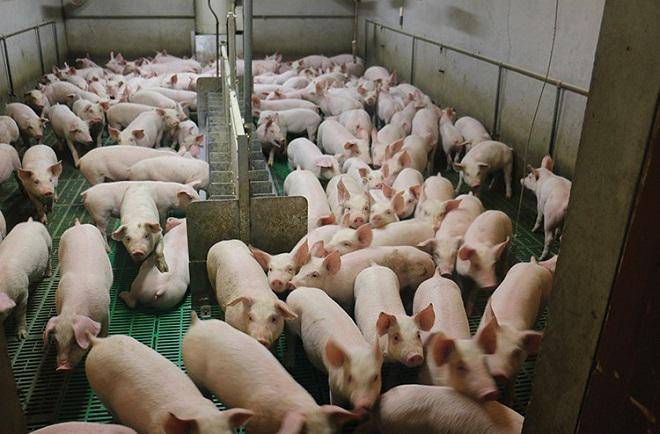
5 Summary and outlook
In summary, octacosanol is a natural nutrient with multiple effective physiological regulatory effects and high safety, and has potential application value in animal husbandry. However, there have been few purification experiments on octacosanol at home and abroad. In the experiments studying its physiological functions, octacosanol is mostly a natural extract and its composition is generally a mixture. Therefore, in future research and applications, the source of octacosanol needs to be considered, more in-depth exploration of its physiological functions and molecular mechanisms, and exploration of the potential characteristics and functions of octacosanol, so as to promote industrial-scale production. It is also possible to further precisely study the nutritional strategies of mixing octacosanol with other long-chain fatty alcohols, providing theoretical guidance for the prevention and treatment of human diseases and the safe and efficient production of animals.
Reference:
[1]Pollard A, Chibnall A C, Piper S H. The isolation of n-octac- osanol from wheat wax[J]. Biochem J, 1933, 27(6): 1889-1893.
[2]Jung D M, Lee M J, Yoon S H, et al. A gas chromatography- tandem quadrupole mass spectrometric analysis of policosanols in commercial vegetable oils[J] . J Food Sci, 2011, 76(6): C891-C899.
[3]Gao W, Liu D, SuS. High-performance thin-layer chromato- graphyfor quantification of 1-octacosanol in Antarctic krill (Euphausia superbaDana)[J]. J Chromatogr Sci, 2015, 53(5): 811-815.
[4]Keller S, Gimmler F, Jahreis G. Octacosanol administration to humans decreases neutral steroland bile acid concentration in feces[J]. Lipids, 2008, 43(2): 109-115.
[5]Sharma R, MatsuzakaT, KaushikM K, et al. Octacosanol and policosanol prevent high-fat diet-induced obesity and metabolic disorders by activating brown adipose tissue and improving liver metabolism[J]. Sci Rep, 2019, 9(1): 5169.
[6]Kato S, KarinoK, Hasegawa S, et al. Octacosanol affects lipid metabolism in rats fed on a high-fat diet[J]. Br JNutr, 1995, 73(3): 433-441.
[7]Taylor JC, Rapport L, Lockwood G B. Octacosanol in human health[J]. Nutrition, 2003, 19(2): 192-195.
[8]GanieS A, YadavS S. Holoptelea integrifolia (Roxb.) Planch: a review of its ethnobotany, pharmacology, and phytochemistry [J]. BiomedResInt, 2014, 2014: 401213.
[9]Jamkhande PG, BardeS R. Evaluation of anthelmintic activity and in silico PASS assisted prediction of Cordiadichotoma (Forst.) root extract[J]. Anc Sci Life, 2014, 34(1): 39-43.
[10]IscaV M, Seca AM, Pinto D C, et al. Lipophilic profile of the edible halophyte Salicornia ramosissima[J]. Food Chem, 2014,165: 330-336.
[11]Trabelsi H, Renaud J, Herchi W, et al. Triacylglycerols and aliphatic alcohols from fruits of three Tunisian Pistacia lentiscus populations[J]. J Sci Food Agric, 2015, 95(10): 2028- 2032.
[12]Harrabi S, Ferchichi A, Bacheli A, et al. Policosanol compos- ition, antioxidant and anti-arthritic activities of milk thistle (Silybium marianumL.) oil at different seed maturity stages[J]. Lipids Health Dis, 2018, 17(1): 82.
[13]Muthusamy M, Kim JH, Kim S H, et al. Changes in beneficial C-glycosylflavones and policosanol content in wheat and barley sprouts subjected to differential LED light conditions [J]. Plants (Basel), 2020, 9(11):1502.
[14]Wang S, Ye F. Determination of triacontanolandoctacosanol in fenglasu and fenglasu capsules by capillary gas chromatogr- aphy[J]. Zhong Yao Cai, 2001, 24(10): 741-742.
[15]Venturelli A, Brighenti V, Mascolo D, et al. A new strategy based on microwave-assisted technology for the extraction and purification of beeswax policosanols for pharmaceutical purposes and beyond[J]. JPharm Biomed Anal, 2019, 172: 200-205.
[16]Lu Y, Jiang P. [Chemical constituents of Eupolyphaga sinensis Walker][J]. Zhongguo Zhong Yao Za Zhi, 1992, 17(8): 487- 489, 512.
[17]Kabir Y, Kimura S. Tissue distribution of (8-14C)-octacosanol in liver and muscle of rats after serial administration[J]. Ann Nutr Metab, 1995, 39(5): 279-284.
[18]Kabir Y, Kimura S. Biodistribution and metabolism of orally administered octacosanol in rats[J]. Ann Nutr Metab, 1993, 37(1): 33-38.
[19]Sen G S, Ghosh M. Octacosanol educes physico-chemical attributes, release and bioavailability as modified nanocrystals [J]. Eur JPharm Biopharm, 2017, 119: 201-214.
[20]ChuB, QuY, Huang Y, et al. PEG-derivatized octacosanol as micellar carrier for paclitaxel delivery[J]. IntJPharm, 2016, 500(1-2): 345-359.
[21]Menendez R, Marrero D, Mas R, et al. In vitro and in vivo study of octacosanol metabolism[J]. Arch Med Res, 2005, 36(2): 113-119.
[22]Arruzazabala M L, Carbajal D, Mas R, et al. Cholesterol- lowering effects of policosanol in rabbits[J]. Biol Res, 1994, 27(3-4): 205-208.
[23]Menendez R, Amor A M, Rodeiro I, et al. Policosanol modulates HMG-CoA reductase activity in cultured fibroblasts [J]. Arch Med Res, 2001, 32(1): 8-12.
[24]Singh D K, Li L, Porter T D. Policosanol inhibits cholesterol synthesis in hepatoma cells by activation of AMP-kinase[J]. J Pharmacol Exp Ther, 2006, 318(3): 1020-1026.
[25]RaJE, WooS Y, LeeK S, etal. Policosanol profiles and adenosine 5'-monophosphate-activated protein kinase (AMPK) activation potential of Korean wheat seedling extracts according to cultivar and growth time[J]. Food Chem, 2020, 317: 126388.
[26]Menendez R, Fraga V, Amor AM, et al. Oral administration of policosanol inhibits in vitro copper ion-induced rat lipoprotein peroxidation[J]. Physiol Behav, 1999, 67(1): 1-7.
[27]Ng C H, Leung K Y, Huang Y, et al. Policosanol has no antioxidant activity in human low-density lipoprotein but increases excretion of bile acids in hamsters[J]. JAgric Food Chem, 2005, 53(16): 6289-6293.
[28]Kassis A N, Marinangeli C P, Jain D, et al. Lack of effect of sugar cane policosanol on plasma cholesterol in Golden Syrian hamsters[J]. Atherosclerosis, 2007, 194(1): 153-158.
[29]LinY, Rudrum M, van der Wielen R P, et al. Wheat germ policosanol failed to lower plasma cholesterol in subjects with normal to mildly elevated cholesterol concentrations[J]. Meta- bolism, 2004, 53(10): 1309-1314.
[30]Dullens S P, Mensink R P, Bragt M C, et al. Effects of emulsified policosanols with different chain lengths on cholesterol metabolism in heterozygous LDL receptor-deficient mice[J]. J Lipid Res, 2008, 49(4): 790-796.
[31]Arruzazabala ML, Carbajal D, Mas R, et al. Effects of Policos- anol on platelet aggregation in rats[J]. ThrombRes, 1993, 69(3): 321-327.
[32]Arruzazabala ML, Molina V, Carbajal D, et al. Effect of polic- osanol on cerebral ischemia in Mongolian gerbils: role of prostacyclin and thromboxane A2[J]. Prostaglandins Leukot Essent Fatty Acids, 1993, 49(3): 695-697.
[33]Molina V, Arruzazabala M L, Carbajal D, et al. Effect of policosanol on cerebral ischemia in Mongolian gerbils[J]. Braz J Med Biol Res, 1999, 32(10): 1269-1276.
[34]Sharma P, Dwivedee B P, BishtD, et al. The chemical constituents and diverse pharmacological importance of Tinospora cordifolia[J]. Heliyon, 2019, 5(9): e2437.
[35]Fernandez-Arche A, Marquez-MartinA, dela Puerta V R, et al. Long-chain fatty alcohols from pomace olive oil modulate the release of proinflammatory mediators[J]. JNutr Biochem, 2009, 20(3): 155-162.
[36]Rodrigues M J, CustodioL, Lopes A, et al. Unlocking the in vitro anti-inflammatory and antidiabetic potential of polygo- num maritimum[J]. Pharm Biol, 2017, 55(1): 1348-1357.
[37]de Oliveira AM, ConservaL M, de Souza F J, et al. Antinocic- eptive and anti-inflammatory effects of octacosanol from the leaves of Sabicea grisea var. grisea in mice[J]. IntJ Mol Sci, 2012, 13(2): 1598-1611.
[38]Guo T, Lin Q, Li X, et al. Octacosanol Attenuates inflammation in both RAW264.7 macrophages and a mouse model of colitis [J]. JAgric Food Chem, 2017, 65(18): 3647-3658.
[39]Consolazio C F, MatoushL O, Nelson RA, et al. Physiological and biochemical evaluation of potential antifatigue drugs. III. The effect of octacosanol, wheat germ oil and vitamin E on the performance of swimming rats[J]. Rep US Army Med Res Nutr Lab Denver, 1963, 11: 1-2.
[40]Consolazio C F, MatoushL O, Nelson R A, et al. Effect of octacosanol,wheat germ oil, and vitamin e on performance of swimming RATS[J]. J ApplPhysiol, 1964, 19: 265-267.
[41]Kim H, ParkS, HanD S, et al. Octacosanol supplementation increases running endurance time and improves biochemical parameters after exhaustion in trained rats[J]. J Med Food, 2003, 6(4): 345-351.
[42]Bai S, XieL, Liu C, et al. Effects of octacosanol in food physi- ological parameters in tail-suspended rats[J]. Space Med Med Eng (Beijing), 1997, 10(6): 450-452.
[43]Menchetti L, Guelfi G, Speranza R, et al. Benefits of dietary supplements on the physical fitness of German Shepherd dogs during a drug detection training course[J]. PLoS One, 2019, 14(6): e218275.
[44]Kabir Y, Kimura S. Distribution of radioactive octacosanol in response to exercise in rats[J]. Nahrung, 1994, 38(4): 373-377.
[45]Gowans G J, Hawley SA, Ross FA, et al. AMPis a true phy- siological regulator of AMP-activated protein kinase by both allosteric activation and enhancing net phosphorylation[J]. Cell Metab, 2013, 18(4): 556-566.
[46]Lee S H, ScottS D, Pekas E J, et al. Improvement of lipids and reduction of oxidative stress with octacosanol after taekwondo training[J]. IntJ Sports Physiol Perform, 2019, 14(9): 1-7.
[47]Ohta Y, Ohashi K, Matsura T, et al. Octacosanol attenuates disrupted hepatic reactive oxygen species metabolism associ-ated with acute liver injury progression in rats intoxicated with carbon tetrachloride[J]. J Clin Biochem Nutr, 2008, 42(2): 118-125.
[48]KaushikM K, Aritake K, Takeuchi A, et al. Octacosanol restores stress-affected sleep in mice by alleviating stress[J]. Sci Rep, 2017, 7(1): 8892.
[49]Fontani G, Maffei D, Lodi L. Policosanol, reaction time and event-related potentials[J]. Neuropsychobiology, 2000, 41(3): 158-165.
[50]Wang T, Liu YY, Wang X, et al. Protective effects of octacosanol on 6-hydroxydopamine-induced Parkinsonism in rats via regulation of ProNGF and NGF signaling[J]. ActaPharmacol Sin, 2010, 31(7): 765-774.
[51]Wang T, Liu Y, Yang N, et al. Anti-parkinsonian effects of octacosanol in 1-methyl-4-phenyl-1,2,3,6 tetrahydropyridine- treated mice[J]. Neural RegenRes, 2012, 7(14): 1080-1087.
[52]Long L, Wu S G, Yuan F, et al. Effects of dietary octacosanol on growth performance, carcass characteristics and meat quality of broiler chicks[J]. Asian-Australas J Anim Sci, 2016, 29(10): 1470-1476.
[53]Peng K, Long L, Wang Y, et al. Effects of octacosanol extracted from rice bran on the laying performance, egg quality and blood metabolites of laying hens[J]. Asian-Australas J Anim Sci, 2016, 29(10): 1458-1463.
[54]Long L, Wu S G, Yuan F, et al. Effects of dietary octacosanol supplementation on laying performance, egg quality, serum hormone levels, and expression of genes related to thereprod- uctive axis inlaying hens[J]. Poult Sci, 2017, 96(4): 894-903.
[55] Long L, Wu S, Sun J, et al. Effects of octacosanol extracted from rice bran on blood hormone levels and gene expressions of glucose transporter protein-4 and adenosine monophosphate protein kinase in weaning piglets[J]. Anim Nutr, 2015, 1(4): 293-298.
[56]Rodriguez M D, Garcia H. Teratogenic and reproductive studies of policosanol in the rat and rabbit[J]. TeratogCarcinog Mutagen, 1994, 14(3): 107-113.
[57]Rodriguez M D, Sanchez M, Garcia H. Multigeneration repro- duction study of policosanol in rats[J]. ToxicolLett, 1997, 90(2- 3): 97-106.


 English
English French
French Spanish
Spanish Russian
Russian Korean
Korean Japanese
Japanese